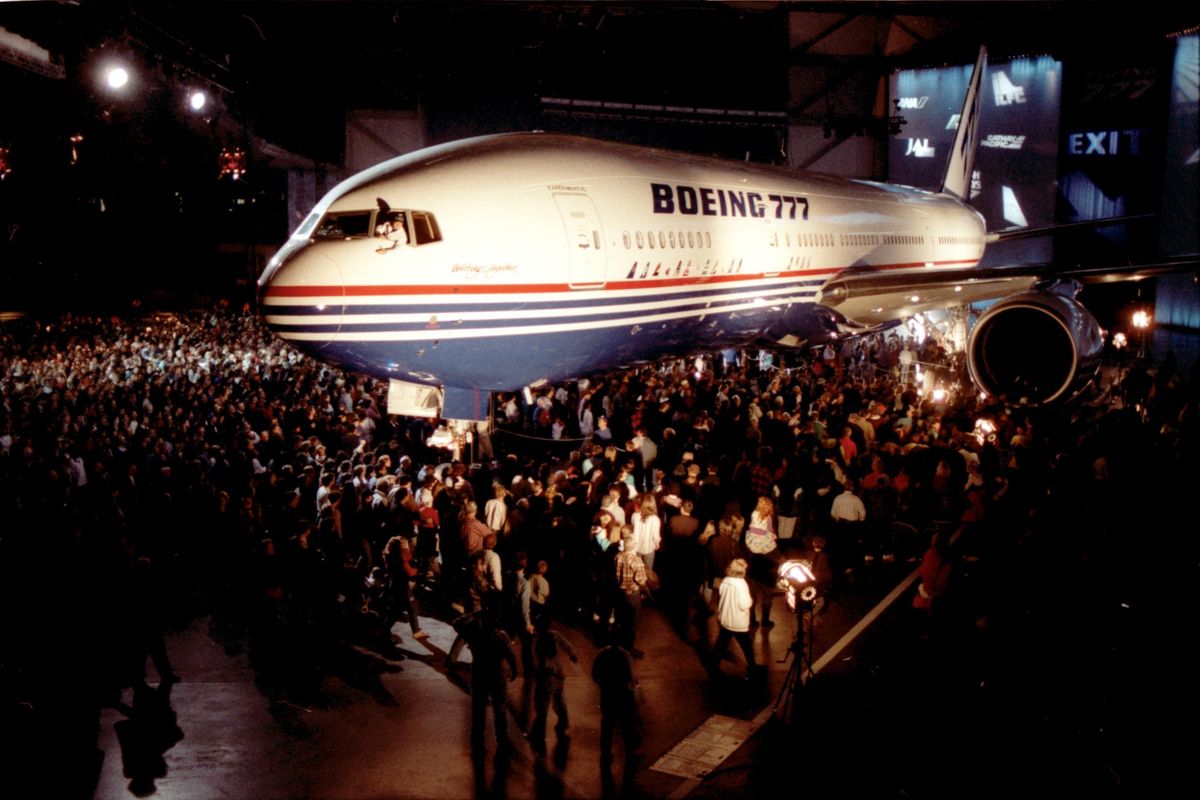Boeing’s long fall, and how it might recover

The intense backlash against Boeing after the near catastrophe aboard an Alaska Airlines 737 Max in January wasn’t a reaction to an isolated manufacturing error but to a yearslong decline of safety standards.
The arc of Boeing’s fall can be traced back a quarter century, to when its leaders elevated the interests of shareholders above all others, said Richard Aboulafia, industry analyst with AeroDynamic Advisory.
“Crush the workers. Share price. Share price. Share price. Financial moves and metrics come first,” was Boeing’s philosophy, he said. It was, he said, “a ruthless effort to cut costs without any realization of what it could do to capabilities.”
To drive down costs, Boeing chose to aggressively confront first its workforce and then its suppliers rather than partner with them. It left both, Aboulafia said, “angry and alienated.”
Today Boeing’s leaders are tepidly admitting that this shareholders-first, cut-costs, workers-be-damned strategy was flawed. But, for two decades, it worked. Boeing’s leaders delivered gushers of cash to shareholders through stock buybacks and dividends – $68 billion since 2010, according to Melius Research – rather than investing in future all-new airplanes.
To ensure the company beat Wall Street projections every quarter, Boeing boosted the stock price with accounting tricks, like pulling forward airline cash advances. Its leaders outsourced work, sold off whole divisions and discarded key capabilities such as developing avionics, machining parts and building fuselages. On the 787, they even outsourced the jet’s wings to Japan.
They moved work away from Boeing’s highly skilled, unionized base in the Puget Sound region. They weakened unions and extorted state government with repeated threats to build future airplanes elsewhere.
They squeezed suppliers by demanding price cuts every year that in turn forced the suppliers into ruinous cost-cutting and left them vulnerable to collapse during shocks like the COVID-19 pandemic.
In all this, from the early 2000s on, Boeing’s leadership emulated corporate America’s then most lionized and influential boss: Jack Welch, General Electric’s hard-edged CEO in the 1980s and ’90s.
Seattle-area Boeing employees and retirees have long complained about the negative cultural impact of the 1997 merger with McDonnell Douglas. That swept in former 25-year GE veteran Harry Stonecipher to run things, the first in a train of executive leaders who had worked under and sought to imitate Welch as cold, imperial CEOs.
These Welch acolytes treated experienced engineers and machinists as expendable, ignoring the potential damage to Boeing’s essential mission of designing and building high-quality airplanes.
In 1999, Fortune magazine hailed Welch as “Manager of the Century” and when he retired two years later – having transformed GE into a financial conglomerate that incidentally made light bulbs, appliances and jet engines – its stock price was flying high.
Likewise, Jim McNerney – who had been groomed at GE as a potential Welch successor and followed Stonecipher as Boeing CEO – retired with a $3.9 million annual pension in 2015 after 10 years leading the company, and convinced he’d left Boeing positioned for its share price to head inexorably upward. It all fell apart.
GE’s financial engineering collapsed that company into near bankruptcy in the 2008 financial crisis. It had to sell off the light bulb and appliance divisions. The once-great American manufacturer was finally broken up completely earlier this month. At Boeing, five straight years of disastrous airplane design and quality problems have ripped apart its reputation as America’s premier aviation icon.
How can it recover?
First: Move Boeing’s headquarters back to Seattle.
That would be symbolically powerful and to industry observers is logical.
The move to Chicago in 2001, orchestrated by then-CEO Phil Condit and Stonecipher, served only to distance the leadership from Boeing’s workers. The relocation of the headquarters to Arlington, Virginia, in 2022 proved the Chicago move a failure, and equally makes no sense for Boeing’s main business.
“Seattle is the capital of aviation in the U.S.,” Pilarski said.
“You can’t run Boeing from the East Coast,” said Bank of America’s Epstein.
Second: An advance commitment from Boeing to build that next all-new jet in its Seattle area factories, with significant secondary work allocated to South Carolina.
“Tell the (workers) who know how to produce planes, who have been doing it for decades, that no, we’re not moving everything to a totally different place,” Pilarski said.
For many years, Boeing’s leadership has steadfastly refused to offer such a promise to its workers. If the jet maker is to recover from the current crisis, is it time?
